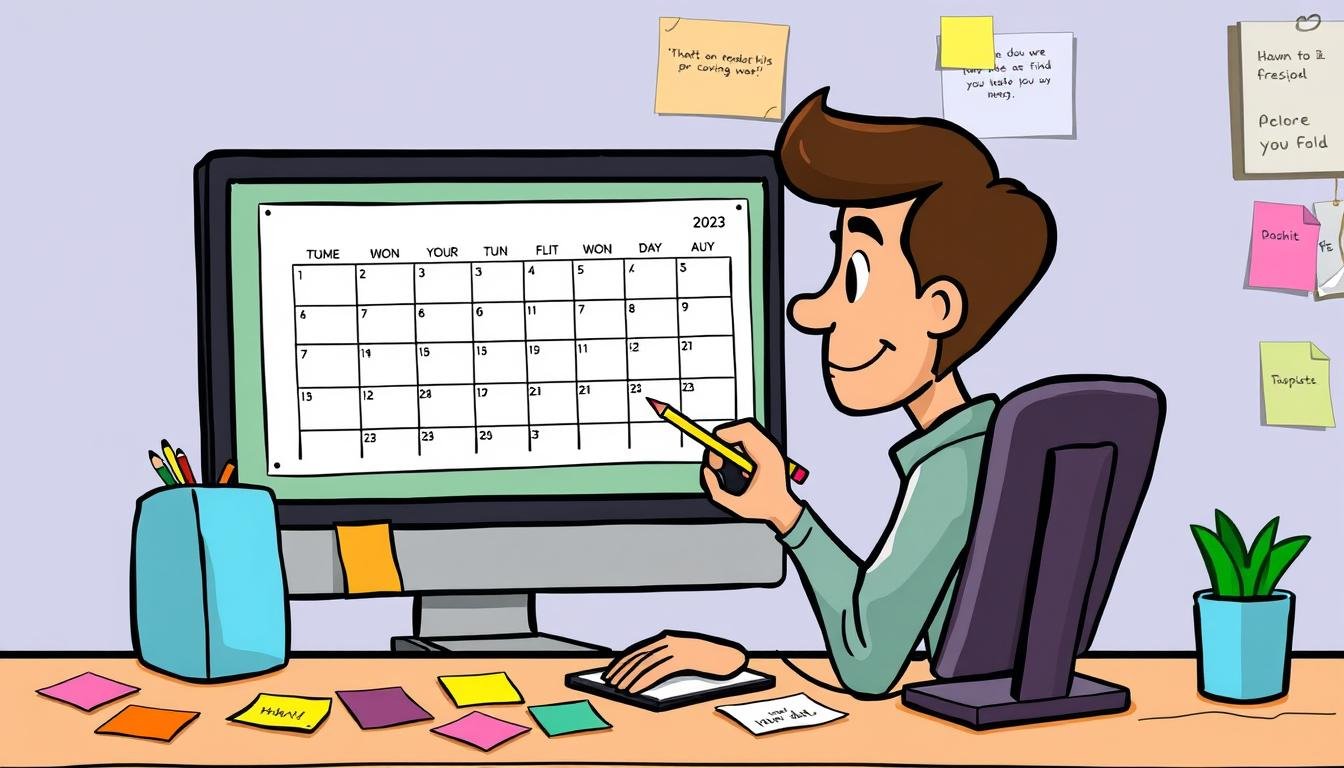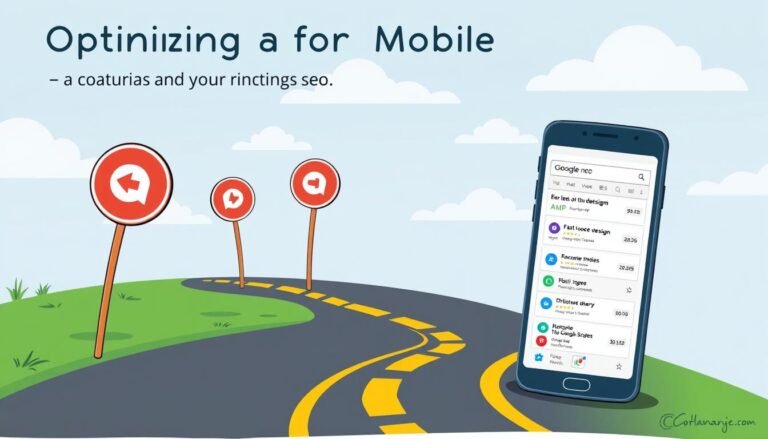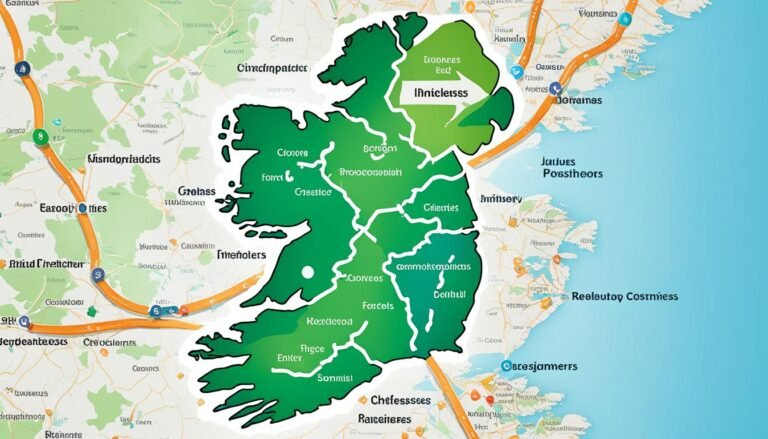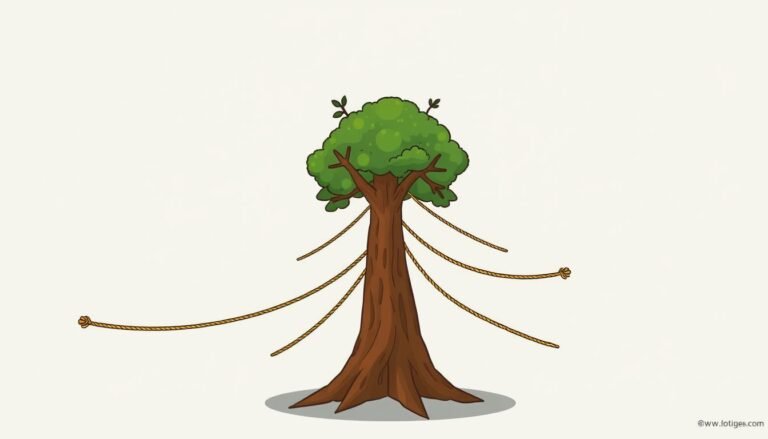The Ultimate Guide to Creating a Content Calendar
Did you know that companies focusing on content marketing are 13 times more likely to see a positive return on investment? In today’s fast digital world, having a good content plan is key. A well-made content calendar is vital for this, helping you plan and connect with your audience better.
Using a content calendar helps keep your content consistent across all platforms. It also makes working together easier for your team and boosts efficiency. This guide will show you how to make a great content calendar. You’ll learn about the importance of planning and the tools that can change your content strategy. Get ready to make your content planning smoother and more powerful.
Key Takeaways
- A content calendar is essential for organized content planning.
- Prioritizing effective engagement leads to better audience interaction.
- Regular updates and flexibility in planning are crucial for ongoing success.
- Utilizing the right tools can enhance collaboration and efficiency.
- Strategically planned content builds trust and improves search engine rankings.
Understanding Content Calendars
A content calendar is a key tool for planning and managing content marketing. It shows what content will be made, like its publication dates, channels, formats, and visuals. This tool helps plan content development well.
What is a Content Calendar?
A content calendar helps organize content production. It groups content into topics and themes that match the audience’s interests. It uses different formats like blog posts, videos, podcasts, and infographics to keep people interested.
It also plans when to publish content. This balance of consistency and quality is key to building a loyal audience.
The Importance of a Content Calendar in Marketing
For businesses, knowing the value of a content calendar is crucial. Regular posts help keep the audience engaged and grow the blog. With tools like Trello, Google Sheets, CoSchedule, managing the calendar is easy.
Keeping the calendar up-to-date is important. It helps teams stay on top of trends and check how people respond. A well-planned content calendar helps organize and boost content impact across various channels.
The Benefits of Creating a Content Calendar
Creating a content calendar has many advantages that can boost marketing efforts. It helps teams stay organized and work more effectively. Knowing the benefits can motivate businesses to use this important tool.
Maintaining Consistency Across Platforms
Being consistent is key to a strong brand presence. A content calendar helps plan and share content across different channels. This way, messages stay consistent and connect well with the audience. Companies that plan their content see better brand loyalty and more engagement.
Time Management and Efficiency
Content calendars make managing time and improving efficiency easier. They help schedule posts ahead, so teams can focus on creativity instead of rushing. Using calendars well makes marketing processes smoother and more productive.
Improving Team Collaboration
A content calendar helps marketing teams work better together. It’s a place where team members can see what’s coming up and deadlines. This clear view helps with communication and coordination. Teams can work together better, making content that’s richer and of higher quality.
Crafting Your Content Strategy
Creating a strong content strategy means planning carefully. It’s key to set SMART goals for content to make sure each piece helps meet marketing goals. These goals should be clear, measurable, achievable, relevant, and timely. This helps guide your content efforts.
Setting Clear Goals and Objectives
Content goals should match your business goals, like boosting brand visibility or engaging more customers. Clear objectives help teams focus and track progress. Knowing what your audience needs helps set goals that speak to them.
Mapping Content to the Customer Journey
Using customer journey mapping in your content strategy is smart. It shows where customers are: just learning, thinking about options, or ready to decide. Matching content with these stages makes it more relevant and effective. For example, blog posts and videos can spark interest, while case studies and testimonials help with making a choice. This way, brands can guide customers through their buying journey with the right content.
| Stage | Content Types | Goals |
|---|---|---|
| Awareness | Blog Posts, Infographics, Social Media Posts | Informing and attracting potential customers |
| Consideration | Whitepapers, Webinars, Demos | Educating the audience about solutions |
| Decision | Case Studies, Testimonials, Free Trials | Encouraging purchase decisions |
The Ultimate Guide to Creating a Content Calendar
Starting with content calendar creation means picking the right platforms. Know where your audience hangs out. Look at social media, blogs, and email newsletters. Check out what your competitors do well to learn about content types and how often they post. This helps you match your content to what your audience likes, boosting engagement and reach.
Choosing the Right Platforms for Your Audience
Choosing the right platforms is key to getting people to interact with your content. For instance, Instagram and Facebook are great for reaching younger people. LinkedIn is better for professionals. Matching your content with the vibe of these platforms helps build a strong brand.
Deciding on Content Themes
Choosing broad content themes should match your business goals and appeal to your audience. Themes can be educational, entertaining, or promotional. This variety keeps your content fresh and meets different audience interests, keeping them engaged.
Establishing a Posting Schedule
Having a posting schedule keeps you visible and keeps people interested. It’s important to post often but keep quality high. Studies show that regular posting can increase reach and engagement, leading to more clicks and conversions. Keep an eye on your calendar and adjust as needed. Tools like Trello or Google Sheets can help manage deadlines and workflows.
| Content Metric | Purpose | Importance |
|---|---|---|
| Engagement Rates | Measures audience interaction | Indicates content resonance |
| Conversion Rates | Tracks audience actions | Shows content persuasiveness |
| Click-Through Rates | Indicates link interactions | Reflects content appeal |
| Reach | Unique viewers of content | Establishes brand awareness |
| Impressions | Frequency of content visibility | Enhances exposure potential |
Steps to Build Your Content Calendar
Building a content calendar is a structured way to make your content creation easier. It starts with gathering important info and picking the right tools for managing content.
Gathering Key Information for Your Calendar
Start by learning about your audience and what you want to achieve with your content. Know what they like, their problems, and what content they find interesting. This helps make sure your calendar fits your marketing goals.
Selecting the Right Tools and Templates
Choosing the right tools is key for managing your content calendar well. You might use Google Sheets, Notion, or platforms like Asana and Trello. Make sure to keep promotional content separate from editorial content. Templates often have columns for things like channel, topic, and who’s in charge, which helps keep things organized.
Deciding on Content Types and Formats
Using different content formats like articles, videos, podcasts, and infographics keeps your audience interested. Think about what fits your brand and what your audience likes. Some content stays relevant over time, while others are best shared when they’re new. Mixing it up makes your content strategy stronger and gets more people involved.
| Content Type | Description | Benefits |
|---|---|---|
| Articles | Written content that provides in-depth information | Establishes authority, boosts SEO |
| Videos | Visual content that communicates messages effectively | High engagement, shareability |
| Podcasts | Audio format that engages audiences on-the-go | Builds connections, diverse audience reach |
| Infographics | Visual representations of data or information | Easy to digest, enhances understanding |
With detailed steps and the right tools, anyone can manage the process of building a content calendar well. This method helps keep your content consistent and improves the quality of what you create.
Creating and Scheduling Your Content
Creating an efficient workflow for making and scheduling content boosts productivity. It also makes sure your messages hit the mark with your audience. By using content creation best practices, you can make processes smoother and keep quality high on all platforms.
Content Creation Best Practices
Follow these key principles for better content creation:
- Improved Organization: Use a content calendar to organize ideas, deadlines, and when to publish. This avoids last-minute rushes.
- Consistency: Plan your content ahead to keep posts flowing regularly. This builds trust with your audience.
- Enhanced Quality: Set aside time for research, writing, and editing to produce better content.
- Efficiency: Group tasks in your schedule to save time and reduce stress, while focusing better.
- Better Strategy Alignment: Make sure your content fits with your marketing goals. This gives you a clear plan for your efforts.
Using Scheduling Tools Effectively
Content scheduling tools can help improve your strategy. Tools like Hootsuite or Buffer let you:
- Conduct Social Media Audit: See how you’re doing on social media, how engaged your followers are, and how your content is performing.
- Implement Competitive Benchmarking: Look at what your competitors do to find ways to stand out.
- Identify Audience Demographics: Pick platforms where your target audience hangs out to reach them better.
- Establish a Posting Schedule: Set a regular schedule for posting content that meets your audience’s needs.
- Plan Content Mix: Mix up your content with articles, videos, and user-generated content to keep things interesting.
Analyzing and Adjusting Your Content Calendar
In today’s fast-paced content marketing, always checking and tweaking your content calendar is key to success. Using tools for performance metrics tracking helps gather important data. This lets marketers see what works well and what doesn’t.
Tracking Performance Metrics
Metrics like engagement rates, conversion stats, and audience reach are crucial. They show which content types connect best with your audience. With this info, teams can adjust their adapting content strategy. This ensures their content matches what their audience likes and cares about.
Adapting to Trends and Audience Feedback
Being creative and flexible is vital in keeping up with trends and what your audience wants. It’s important to watch for changes in what people are interested in and what’s new in your industry. This way, you can quickly update your content calendar with new topics that keep people interested. Being adaptable can lead to better content performance and more loyal audience members.
| Metric | Purpose | Tools to Use |
|---|---|---|
| Engagement Rate | Measures how well the audience interacts with content | Google Analytics, Hootsuite |
| Conversion Rate | Tracks how many users take a desired action | HubSpot, Optimizely |
| Audience Reach | Identifies the number of unique users who see content | Facebook Insights, Twitter Analytics |
| Click-Through Rate | Measures the effectiveness of content in driving traffic | Mailchimp, Bitly |
Conclusion
Creating a content calendar is key to a strong content marketing strategy. It keeps things consistent, saves time, and helps teams work better together. A well-planned calendar leads brands to their content goals, making it easier to connect with their audience.
This guide has given marketers the tools they need for long-term success. From understanding what their audience likes to checking social media stats, it’s all here. Remember, updating your content calendar regularly is crucial to keep up with market changes and improve your results.
Sticking to this organized approach boosts a brand’s content marketing. It keeps them relevant and in tune with what their audience wants. In short, a good content calendar is like a roadmap. It makes sure your marketing hits the mark at the right time.
Source Links
- The Ultimate Guide to Creating a Content Calendar – KALIX
- Content Calendar Creation: The Ultimate Guide
- Create an Effective Content Calendar: The Ultimate Guide + Management Tools
- Creating A Content Calendar: The Ultimate Guide For Updating Content In 2024
- Creating a Content Calendar: Step-By-Step Guide + Examples
- Complete guide to content calendar creation
- A Comprehensive Guide to Creating a Social Media Content Calendar
- The Ultimate Guide to Crafting a Social Media Content Calendar
- How To Create a Content Calendar That Aligns Your Team and Drives Results – Contently
- I Found the Secret to Creating a Social Media Calendar to Plan Content
- What Is a Content Calendar? How to Build One + Free Template
- Creating a Content Calendar – 10 Tips to get started – LianaTech.com
- How to Create a Social Media Content Calendar [2024] • Asana
- How to set up a content calendar: Full guide [with templates]
- The Ultimate Guide to Creating a Powerful Content Calendar in 2024
- Bricks | The Ultimate Guide to Creating a Social Media Content Calendar
- Social Media Content Calendar: The Ultimate Guide
- Guide for 2024 [+ Template]








